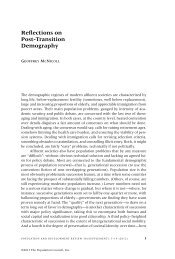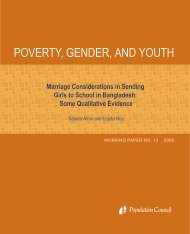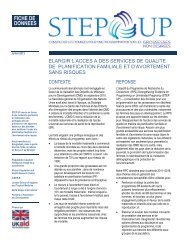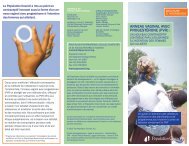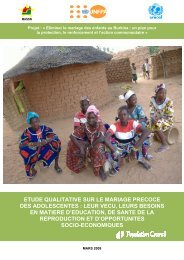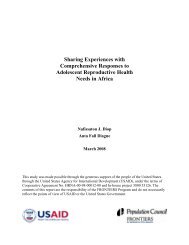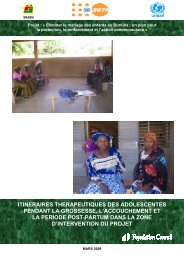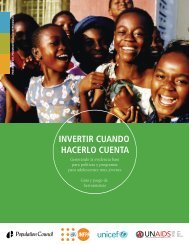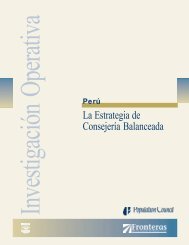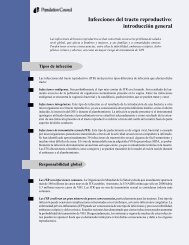Community Health Volunteer's Training Manual - Population Council
Community Health Volunteer's Training Manual - Population Council
Community Health Volunteer's Training Manual - Population Council
You also want an ePaper? Increase the reach of your titles
YUMPU automatically turns print PDFs into web optimized ePapers that Google loves.
Module 4 The work of <strong>Community</strong> <strong>Health</strong> Volunteers<br />
Topic 2 Components of a healthy diet<br />
200<br />
Everywhere in the world, people eat the foods that are common in their community. Though<br />
the diets may be different, these foods contain certain common basic nutrients. These<br />
nutrients are proteins, fats, carbohydrates, micronutrients, vitamins, water and roughage<br />
(Box 4.3.1). A healthy or balanced diet is a meal which consists of a mixture of these basic<br />
food nutrients in the right proportions.<br />
Many people do not eat the right food in the right combination. This is not because they<br />
don’t have the food, but it is often because they do not know the right combination of<br />
foods to get a healthy diet. Poor diets and poor food choices expose the body to attacks by<br />
diseases.<br />
Exercise 4.3.1<br />
Objective<br />
1. To discuss the food groups and plan a balanced<br />
diet with a common combination of food in your<br />
community<br />
Time: 5 minutes<br />
Questions<br />
1. What are the common foods in Ghana?<br />
2. What are the main food ingredients and their<br />
food nutrients?<br />
3. What common combination of food in your<br />
community constitutes a balanced/healthy diet?<br />
Box 4.3.1: The seven food groups<br />
Instructions to the<br />
Facilitator<br />
1. Lead participant in<br />
brainstorming common<br />
foods eaten in our<br />
communities and the<br />
nutrients they contain.<br />
2. Help them to identify a<br />
balanced/healthy diet<br />
with locally available<br />
foods.<br />
1. Proteins or body building materials (meat, fish, milk, egg, chicken, groundnuts, snails,<br />
soyabean, legumes (beans)<br />
2. Fat which are energy giving foods (oils, fats)<br />
3. Carbohydrates which are energy giving foods (cassava, yam, plantain, cocoyam, rice,<br />
etc)<br />
4. Micronutrients which repair the body (iodated salts)<br />
5. Vitamins that aid in the absorption of foods (fruits, okra, garden eggs, green leafy<br />
vegetables)<br />
6. Water which lubricates the body cells (fruits and leaves e.g. kontomire or cocoyam leaf)<br />
7. Roughage which helps in digesting the food we eat.



